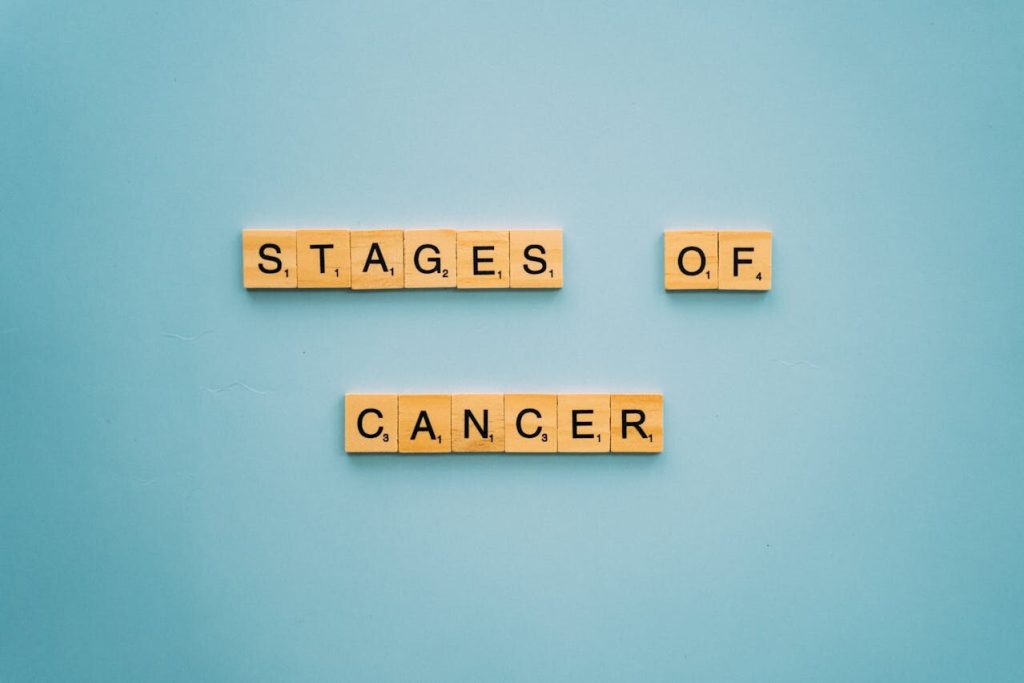As cancer rates continue to rise, patients are increasingly turning to natural treatments to complement or replace conventional therapies. One such treatment that has gained attention in recent years is mistletoe therapy, which uses extracts from the mistletoe plant to fight cancer cells.
Mistletoe has been used for centuries in traditional medicine, and there is now scientific evidence to support its efficacy as an anticancer agent. Research has shown that mistletoe extract can induce cancer cell death by disrupting cellular signaling pathways and stimulating the immune system.
Key Takeaways:
- Mistletoe therapy is a potential natural treatment for cancer.
- Mistletoe extract can induce cancer cell death by disrupting cellular signaling pathways and stimulating the immune system.
- Scientific research supports the efficacy of mistletoe therapy in treating cancer.
Understanding Mistletoe Therapy
Mistletoe therapy, also known as Viscum album therapy, is a form of natural cancer treatment that uses extracts from the European mistletoe plant. This therapy has been used for over 90 years and has gained popularity due to its potential benefits and minimal side effects.
Research has shown that mistletoe therapy may help in stimulating the immune system, inhibiting tumor growth, and improving quality of life for cancer patients. The therapy involves administering a mistletoe extract in various ways, such as subcutaneous injections, oral tablets, or infusions.
Understanding Mistletoe Therapy Benefits
Mistletoe therapy has various potential benefits for cancer patients. It helps the body to strengthen the immune system, which can fight cancer cells more effectively. It also reduces the side effects of conventional cancer treatments, such as chemotherapy and radiotherapy.
A study published in the European Journal of Cancer found that mistletoe therapy improved the quality of life for cancer patients, including reducing fatigue and nausea. Additionally, another study published in the Journal of Cancer Research and Therapeutics showed that mistletoe therapy improved survival rates and reduced the side effects of chemotherapy in colon cancer patients.
Understanding Mistletoe Cancer Research
Several scientific studies have investigated the effectiveness of mistletoe therapy for cancer treatment. A study published in the Journal of Clinical Oncology found that mistletoe therapy improved the survival rate of pancreatic cancer patients. Another study published in the BMC Cancer Journal showed that mistletoe therapy combined with chemotherapy improved survival rates for breast cancer patients.
While there is still more research needed to fully understand the effectiveness of mistletoe therapy, the available evidence suggests that it can be a useful and safe complementary therapy for cancer patients. It should, however, be used under the guidance of a qualified healthcare professional.
The Mechanism of Mistletoe Extract in Killing Cancer Cells
Mistletoe extract has been found to have numerous anticancer properties, including the ability to kill cancer cells and inhibit their growth. The extract contains various bioactive compounds, including viscotoxins, lectins, and flavonoids, which are believed to play a role in its anticancer effects.
Viscotoxins, in particular, have been shown to induce apoptosis, or programmed cell death, in cancer cells. These toxins bind to the outer membrane of cancer cells, leading to a disruption of the cell’s internal environment and ultimately triggering apoptosis. Additionally, mistletoe extract has been found to increase immune system activity, which can aid in the body’s natural defense against cancer cells.
Research has also suggested that mistletoe extract may help to inhibit the growth of blood vessels that supply cancer cells with nutrients. By cutting off the tumor’s blood supply, mistletoe extract can effectively starve the cancer cells, leading to their death.
Holistic Cancer Care at the Cancer Center for Healing
The Cancer Center for Healing, under the guidance of Dr. Leigh Erin Connealy, offers a comprehensive approach to cancer care that includes natural treatments like mistletoe therapy. The center recognizes the importance of treating the whole person, not just the disease, by addressing underlying imbalances and utilizing a range of holistic treatment modalities.
In addition to mistletoe therapy, the Cancer Center for Healing offers nutritional counseling, acupuncture, emotional support, IV therapy, and more. By combining these various approaches, the center aims to create personalized treatment plans that optimize patient outcomes and promote long-term health and wellness.
Mistletoe Therapy for Different Types of Cancer
Mistletoe therapy has been studied extensively for its potential to treat various types of cancer. In particular, it has been found to have a positive effect on breast, pancreatic, colon, lung, and stomach cancers.
One study published in the journal Evidenced-Based Complementary and Alternative Medicine found mistletoe therapy to be effective in improving the quality of life and survival rates of patients with pancreatic cancer. Another study published in the journal BMC Cancer showed that mistletoe extract can inhibit the growth and metastasis of colon cancer cells.
Research has also shown mistletoe therapy to be beneficial for breast cancer patients. A study published in the journal Anticancer Research found that mistletoe extract can induce apoptosis (cell death) in breast cancer cells and improve overall survival rates.
Furthermore, mistletoe therapy has shown promising results in treating lung cancer. A study published in the Journal of Thoracic Oncology found that mistletoe therapy can improve the quality of life and reduce symptoms in patients with non-small cell lung cancer.
While more research is needed to fully understand the potential benefits of mistletoe therapy for different types of cancer, the existing studies suggest that it may be a valuable addition to comprehensive cancer treatment plans.
Potential Side Effects of Mistletoe Cancer Therapy
As with any cancer treatment, mistletoe therapy may cause side effects in some patients. However, the severity and frequency of these side effects are typically much lower than those associated with conventional cancer treatments like chemotherapy and radiation.
The most common side effects of mistletoe therapy include mild flu-like symptoms such as fever, fatigue, and muscle aches. These symptoms typically occur shortly after the injection and subside within a few hours or days. Nausea and vomiting are also possible but rare side effects.
More serious side effects are extremely rare but have been reported in some cases. These include allergic reactions, severe inflammation, and organ damage. However, such reactions are generally associated with improper dosing, poor quality of extract or unprofessional administration of the therapy.
Before administering mistletoe therapy, a qualified healthcare provider should carefully assess the patient’s medical history and current health status to determine the appropriate dosage and frequency of treatment. Additionally, patients should be closely monitored throughout the course of treatment to ensure that any potential side effects are promptly addressed.
Integrating Mistletoe Therapy into Cancer Treatment Plans
Mistletoe therapy can be integrated into comprehensive cancer treatment plans to improve outcomes and reduce side effects. Studies have shown mistletoe therapy to be effective in treating a range of cancers, including breast cancer, colon cancer, and lung cancer, among others.
At the Cancer Center for Healing, mistletoe therapy is often used in combination with other natural remedies, including nutritional supplements, dietary changes, and mind-body techniques. This personalized approach aims to treat the whole person, not just the cancer, and optimize the body’s natural healing mechanisms.
Integrating Mistletoe Therapy with Other Natural Remedies
In addition to mistletoe therapy, other natural remedies may be integrated into cancer treatment plans. Nutritional supplements, such as vitamin D and curcumin, have been shown to have anti-cancer properties and may work synergistically with mistletoe extract. Dietary changes, such as reducing sugar and processed food intake, may also help to support the immune system and improve outcomes.
Mind-body techniques, such as meditation and yoga, can help to reduce stress and improve quality of life during cancer treatment. These techniques may also improve immune function and help to alleviate side effects of chemotherapy and radiation therapy.
Consulting with a healthcare professional, such as Dr. Leigh Erin Connealy at the Cancer Center for Healing, can help to identify the most appropriate natural remedies to incorporate into a comprehensive cancer treatment plan.
Personalized Mistletoe Treatment Plans
One of the key factors in the success of mistletoe therapy for cancer is the importance of personalized treatment plans. At the Cancer Center for Healing under the guidance of Dr. Leigh Erin Connealy, mistletoe therapy is tailored to each patient’s individual needs, including dosage, frequency, and duration of treatment.
Factors such as the type and stage of cancer, the patient’s overall health and medical history, and any other ongoing treatments or medications are taken into account when designing a mistletoe treatment plan. This personalized approach helps to optimize the effectiveness of mistletoe therapy while minimizing potential side effects.
The Role of Mistletoe Therapy in Cancer Survivorship
While mistletoe therapy has shown promise as an alternative cancer treatment, its potential benefits may extend beyond tumor reduction. Some studies suggest mistletoe extract may stimulate the immune system, improving overall health and cancer resistance. As a result, mistletoe therapy may have a role in cancer survivorship and prevention.
At the Cancer Center for Healing, mistletoe therapy is often used as part of individualized survivorship plans. These plans may include regular mistletoe injections to help boost the immune system and reduce the risk of cancer recurrence.
As with any natural treatment, the efficacy of mistletoe therapy in cancer survivorship varies depending on individual circumstances. However, its potential to improve overall health, reduce inflammation, and improve cancer resistance make it a promising option for long-term cancer management.
Exploring Other Natural Approaches to Cancer Treatment
While mistletoe therapy has shown promise in treating cancer, it is important to note that it is not a standalone solution. Incorporating other natural approaches to cancer treatment can help support the body’s natural healing processes and improve overall outcomes.
Diet and lifestyle changes are critical components of any comprehensive cancer treatment plan. Eating a whole foods, plant-based diet rich in nutrients and antioxidants can help nourish the body and support immune function. Exercise, stress reduction techniques, and adequate sleep can also help improve overall health and wellbeing.
Supplementation with certain vitamins, minerals, and other nutrients may also be beneficial. For example, vitamin D has been shown to play a role in cancer prevention, while curcumin, a compound found in turmeric, has potent anti-inflammatory and antioxidant properties.
Mind-body techniques such as meditation, yoga, and acupuncture can also help manage symptoms and improve quality of life for cancer patients.
At the Cancer Center for Healing, patients can work with a team of experts to develop a personalized treatment plan that includes a variety of natural approaches to cancer care.
Testimonials and Success Stories
Patients who have undergone mistletoe therapy at the Cancer Center for Healing have reported positive experiences and outcomes. One patient, Mary, was diagnosed with breast cancer and underwent chemotherapy, radiation, and surgery. However, she experienced debilitating side effects and her cancer eventually returned. After consulting with Dr. Connealy and receiving mistletoe therapy, Mary reported feeling stronger, more energized, and with fewer side effects. She also stated that her cancer markers had decreased significantly.
Another patient, John, was diagnosed with lung cancer and was told he had only a few months to live. He turned to the Cancer Center for Healing for mistletoe therapy and other natural treatments. Over time, John’s cancer markers decreased, his breathing improved, and his energy levels increased. He credits mistletoe therapy with playing a key role in his recovery.
Schedule a Consultation at the Cancer Center for Healing
If you are interested in exploring mistletoe therapy or other natural approaches to cancer treatment, the Cancer Center for Healing is here to help. Led by Dr. Leigh Erin Connealy, our team of experts offers personalized treatment plans tailored to your specific needs and goals.
During your consultation, we will take the time to understand your unique situation and develop a comprehensive treatment plan that may include mistletoe therapy, as well as other natural remedies. Our goal is to help you achieve optimal health and wellness while effectively fighting cancer.
To schedule a consultation at the Cancer Center for Healing, please contact us at [insert phone number or email address]. We look forward to helping you on your journey to healing.
Conclusion
In conclusion, mistletoe therapy has shown promising results as a natural treatment for cancer. Its ability to kill cancer cells, inhibit their growth, and enhance the immune system makes it a valuable addition to comprehensive cancer treatment plans. However, it is important to note that mistletoe therapy may have potential side effects and should be administered under the guidance of a qualified healthcare professional.
At the Cancer Center for Healing, patients can work with Dr. Leigh Erin Connealy to develop personalized mistletoe treatment plans tailored to their individual needs. Additionally, other natural approaches to cancer treatment, such as diet and lifestyle changes, supplementation, and mind-body techniques can be combined with mistletoe therapy for even greater benefits.
Patient testimonials and success stories demonstrate the potential of mistletoe therapy as a powerful tool in cancer treatment and survivorship. If you are interested in exploring mistletoe therapy and other natural treatment options, schedule a consultation with the Cancer Center for Healing today to take the first step towards optimal health and healing.
FAQ
Q: How does mistletoe kill cancer cells?
A: Mistletoe extract has been found to induce apoptosis (cell death) in cancer cells, inhibit their growth, and enhance the immune system’s anti-cancer response.
Q: What are the benefits of mistletoe therapy?
A: Mistletoe therapy has been shown to improve quality of life, reduce side effects of conventional cancer treatments, and potentially enhance overall treatment effectiveness.
Q: How does mistletoe extract work in killing cancer cells?
A: Mistletoe extract exerts its anticancer effects through various mechanisms, including immune system modulation, oxidative stress induction, and inhibition of cancer cell proliferation.
Q: What is the Cancer Center for Healing’s approach to cancer care?
A: The Cancer Center for Healing offers a comprehensive and holistic approach to cancer care, incorporating natural treatments like mistletoe therapy alongside conventional options.
Q: Can mistletoe therapy be used for different types of cancer?
A: Mistletoe therapy has shown potential benefits for various types of cancer, including breast, lung, colon, and pancreatic cancer, among others.
Q: What are the potential side effects of mistletoe cancer therapy?
A: Common side effects of mistletoe therapy include local reactions at the injection site, flu-like symptoms, and mild allergic reactions. However, adverse effects are generally mild and well-tolerated.
Q: How can mistletoe therapy be integrated into cancer treatment plans?
A: Mistletoe therapy can be integrated into comprehensive cancer treatment plans, potentially enhancing treatment effectiveness and reducing side effects when used alongside conventional treatments.
Q: Are mistletoe treatment plans personalized for each patient?
A: Yes, mistletoe treatment plans are personalized based on individual patient factors, including cancer type, stage, overall health, and treatment goals.
Q: What role does mistletoe therapy play in cancer survivorship?
A: Mistletoe therapy may be used as a maintenance therapy in cancer survivorship, helping to prevent cancer recurrence and support overall health and well-being.
Q: Are there other natural approaches to cancer treatment?
A: Yes, other natural approaches to cancer treatment, such as dietary modifications, supplementation, and mind-body techniques, can complement mistletoe therapy for a holistic approach.
Q: Are there any testimonials or success stories from mistletoe therapy patients?
A: Yes, many patients at the Cancer Center for Healing have shared testimonials and success stories, highlighting the positive experiences and outcomes they have achieved with mistletoe therapy.
Q: How can I schedule a consultation at the Cancer Center for Healing?
A: To explore mistletoe therapy and other natural treatment options, you can schedule a consultation at the Cancer Center for Healing with Dr. Leigh Erin Connealy.






